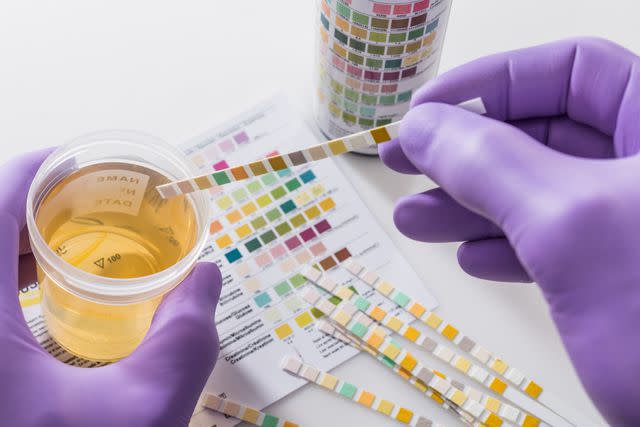Understanding Lupus Nephritis
Medically reviewed by David Ozeri, MD
Lupus nephritis refers to inflammation of the kidneys caused by systemic lupus erythematosus (SLE). Symptoms include foamy urine, blood in the urine, edema, and high blood pressure.
Lupus nephritis occurs in up to 60% of people with lupus. Among people who have lupus nephritis, 10% to 30% develop kidney failure, so it's important to be aware of the signs and symptoms.
This article describes the signs and symptoms of lupus nephritis. It also explains how this condition is diagnosed and treated.

What Causes Lupus Nephritis?
Lupus nephritis is kidney inflammation caused by lupus. For the most part, kidney problems in lupus are caused by damage to clusters of blood vessels in the kidneys called glomeruli.
People who have lupus and associated glomerular damage have lupus glomerulonephritis (LGN). LGN occurs when antibodies and complement proteins build up in the kidneys and cause inflammation.
What Are the First Signs of Lupus Nephritis?
If you are developing lupus nephritis, you may notice these signs and symptoms:
Foamy urine
Increased urinary frequency
Swelling, usually in the feet, ankles, and legs
High blood pressure
Joint pain or swelling
Muscle pain
Fever with no known cause
Red rashes, often on the face
How Is Lupus Nephritis Diagnosed?
To determine if you have lupus nephritis, your physician will conduct urine tests, as well as a physical exam to check your blood pressure and look for fluid build-up around the body, called edema. A blood test may be used to look for high levels of creatinine, a waste product that increases when the kidneys are not functioning well.
Once it's strongly suspected that you have lupus nephritis, your healthcare provider will order a kidney biopsy. There are six types of lupus glomerulonephritis that vary in severity. A biopsy will help identify what type of LGN you have. This diagnosis will help predict the expected course of your kidney problems and guide your treatment.
Because some types of LN can result in complete kidney dysfunction and dependence on dialysis, biopsy results are necessary to shape your care plan and help determine which therapy is necessary and how aggressive it needs to be.
What Is the Best Treatment for Lupus Nephritis?
If you're diagnosed with lupus nephritis, your treatment will focus on improving your kidney function. There are a few options available, and most likely your treatment will be individualized based on the severity and other factors of your disease. Some treatments include:
Medications: Treatment may start with medications to suppress the immune system and reduce inflammation in the kidneys. Corticosteroids or immunosuppressives are used for this. Diuretics can be used to eliminate excess fluid and reduce swelling.
Maintaining a healthy blood pressure: Blood pressure medications, such as angiotensin-converting enzyme (ACE) inhibitors and angiotensin receptor blockers (ARBs), may be prescribed.
Changes to your diet: You may be instructed to reduce salt (sodium) from your diet.
Some patients may be put on anticoagulation: This may be the case because of an associated increased risk of thrombotic events. Statins may be used for an associated increase in lipids.
The good news is that, for most people, treatment for lupus nephritis is highly effective.
Summary
Lupus nephritis refers to kidney inflammation and damage caused by lupus. Symptoms include foamy urine, blood in the urine, edema, and high blood pressure. A kidney biopsy is required to confirm the diagnosis. This condition is treated using medications that reduce inflammation and/or alter the immune system. Blood pressure management and diet also play an important role in treatment.
Read the original article on Verywell Health.

